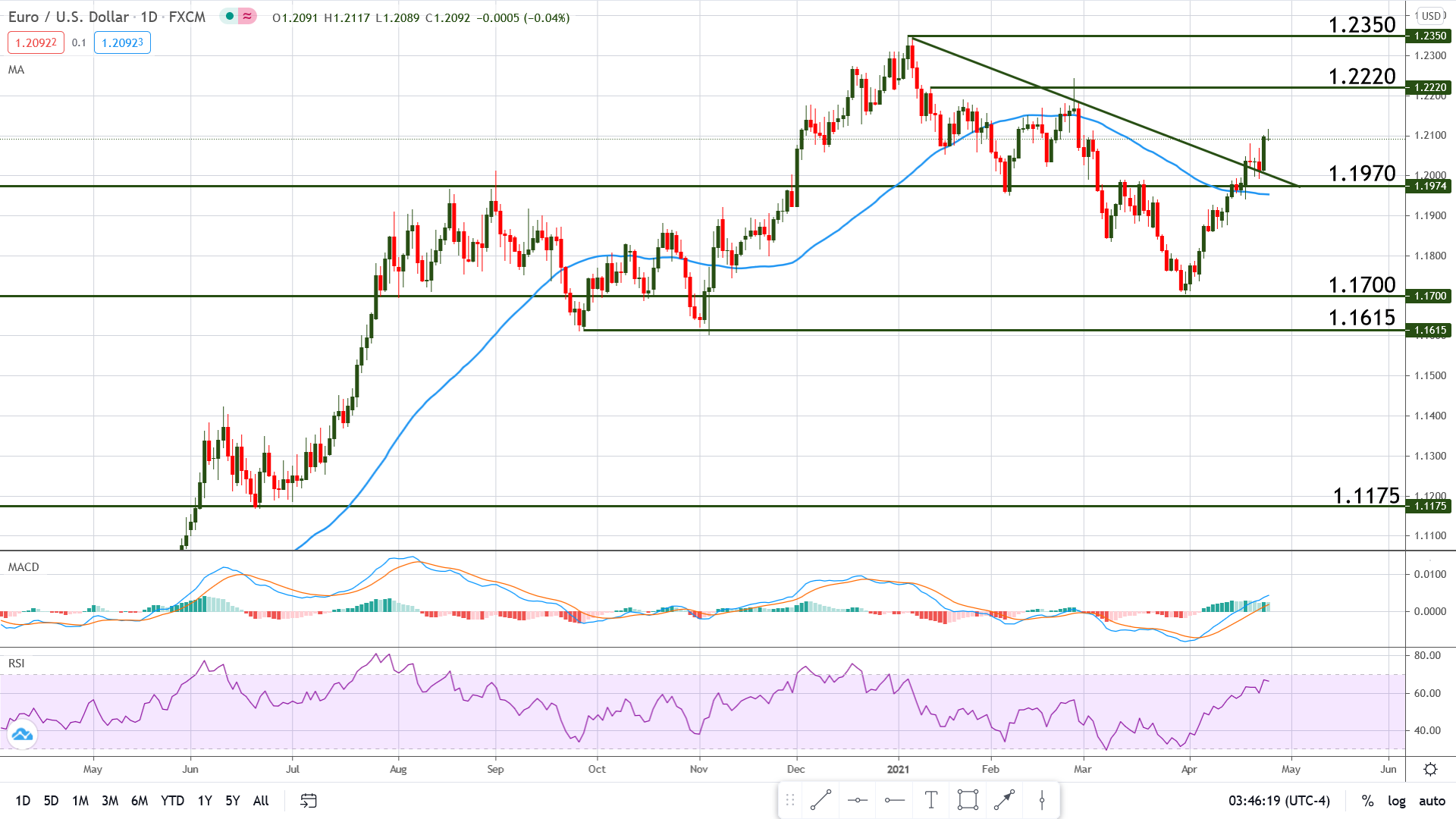US Dollar Collapses to 2-Month Low
Fed Stance on Tapering May Affect the Trend
by Bogdan Giulvezan
The US Dollar lost ground against many of its major counterparts on Monday, taking a nose-dive and retreating to almost 2-month lows. The EUR/USD is currently trading just shy of 1.2100, after a perfect bounce at 1.1700 support, which occurred almost a month ago.
Fed’s meeting that takes place this Wednesday will be the main event of the week but most analysts expect Fed Chair Jerome Powell to reject the tapering of monetary easing, a fact that would put pressure on the greenback, taking EUR/USD even higher.
On the other side of the pond, the Euro was boosted Friday by positive data on European services and manufacturing sectors, while today’s data is expected to show improvement in the German business conditions, which would bolster overall sentiment and possibly push the bloc’s single currency higher against the greenback.
Key Events for the Week Ahead
Tuesday, April 27 the Conference Board Inc. will release the U.S. Consumer Confidence survey, which is a gauge of financial confidence and acts as a leading indicator of consumer spending, which in turn represents a major part of the overall economic activity. The release is scheduled at 2:00 pm GMT and the forecast is 112.0, while the previous reading was 109.7
Wednesday, April 28 at 6:00 pm GMT, the Fed will release the FOMC Statement, which contains the outcome of the Federal Funds Rate votes and half an hour later, Fed Chair Powell will hold the usual press conference. The rate is not expected to change and the Chairman is not expected to have a hawkish stance regarding tapering asset purchases, thus the entire event may go mostly unnoticed. However, surprises are always a possibility, so it’s better to treat the event with caution.
The U.S. Advance GDP will be released Thursday, April 29 at 12:30 pm GMT, and since this is the earliest version of the three (Advance, Preliminary and Final), it tends to have the biggest impact. The forecast is a change of 6.5% (previous 4.3%), which would show increased economic activity for the U.S., possibly boosting the greenback.
Chart Analysis – EUR/USD
After the bounce at 1.1700 support, the pair has been traveling uphill almost in a straight line and has recently moved above a significant bearish trend line drawn from the January 6th high.
The MACD is still showing bullish momentum (lines moving up and well spread apart) and the pair is sitting above the 50 days Moving Average. These factors combined, show buying pressure and increase the possibility of a move into 1.2200 – 1.2220 resistance.
On the other hand, the Relative Strength Index is moving closer to overbought, which may play a role in potential pullbacks. The levels to watch are 1.2100 as immediate resistance, followed by 1.2200, while on the downside we have to keep an eye on 1.2000 – 1.1970 as potential support.
